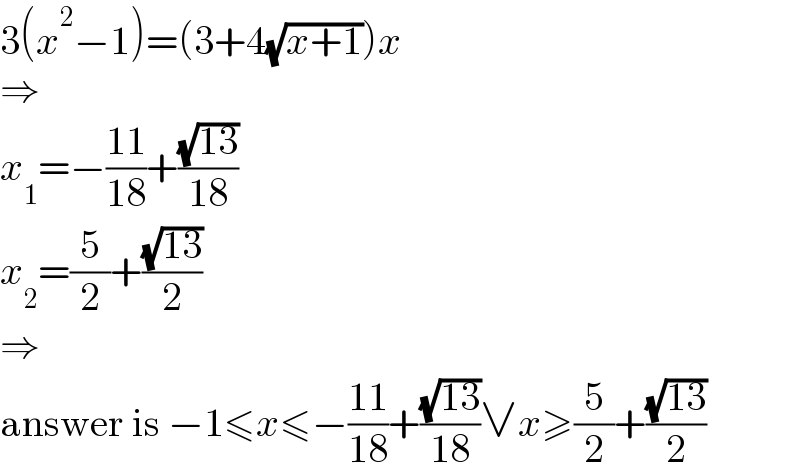Question Number 151934 by john_santu last updated on 24/Aug/21

Answered by MJS_new last updated on 25/Aug/21

$$\mathrm{3}\left({x}^{\mathrm{2}} −\mathrm{1}\right)=\left(\mathrm{3}+\mathrm{4}\sqrt{{x}+\mathrm{1}}\right){x} \\ $$$$\Rightarrow \\ $$$${x}_{\mathrm{1}} =−\frac{\mathrm{11}}{\mathrm{18}}+\frac{\sqrt{\mathrm{13}}}{\mathrm{18}} \\ $$$${x}_{\mathrm{2}} =\frac{\mathrm{5}}{\mathrm{2}}+\frac{\sqrt{\mathrm{13}}}{\mathrm{2}} \\ $$$$\Rightarrow \\ $$$$\mathrm{answer}\:\mathrm{is}\:−\mathrm{1}\leqslant{x}\leqslant−\frac{\mathrm{11}}{\mathrm{18}}+\frac{\sqrt{\mathrm{13}}}{\mathrm{18}}\vee{x}\geqslant\frac{\mathrm{5}}{\mathrm{2}}+\frac{\sqrt{\mathrm{13}}}{\mathrm{2}} \\ $$
Commented by john_santu last updated on 25/Aug/21

$$\mathrm{short}\:\mathrm{cut} \\ $$
